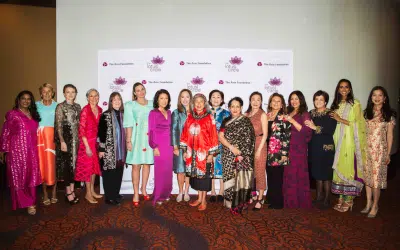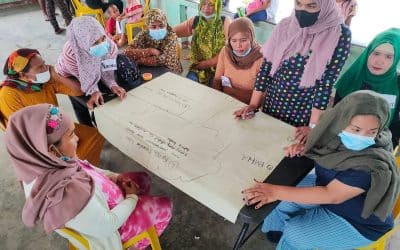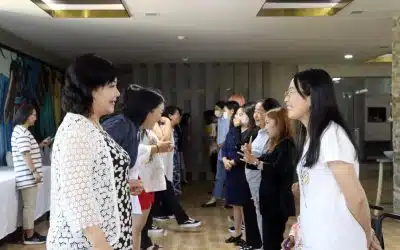InAsia
Insights and Analysis
Philippine Voters Deluged by Election Surveys: But What Do They Measure?
May 5, 2010
As the Philippines enters the final stretch before elections on Monday, May 10, competing survey results continue to deluge the public. The Philippines is well-endowed with respected, technically sound public opinion pollsters (as well as long-standing market researchers). So much so, that many suggest a “poll of polls” approach is necessary to make sense of it all.
Actually, with respect to the president and vice presidential races (who are actually elected separately, though they run as a team), recent results are easy to interpret – all reveal clear front-runners. A Social Weather Stations (SWS) survey from April 16-19 has the Liberal Party’s Noynoy Aquino (Ninoy and Corazon Aquino’s son) leading the Nacionalista Party’s Manny Villar by 12 points, 38 to 26. The same poll puts the Liberal Vice Presidential candidate Mar Roxas ahead of the Nacionalista’s Loren Legarda by 39 to 24 (with Makati Mayor Jojemar Binay at 25 percent – he is running in tandem with former President Estrada who ranked third as a presidential candidate in this year’s race, at 17 percent).
Pulse Asia’s April 23-25 survey finds Noynoy with a 19-point lead over Villar (39 to 20, with Estrada at 20) while the survey places vice presidential candidate Roxas at 37 percent, leading Binay (28 percent) and Legarda (20 percent). The newest of the survey outfits, affiliated with the Manila Standard Today and run by Junie Laylo, in its April 25-27 survey, shows Noynoy in the lead with 38 percent, 16 percentage points above Estrada’s 22 percent. Villar comes in third place with 20 percent. In the vice presidential race, Roxas still leads with 38 percent, followed by Binay at 28 percent and Legarda at 20 percent. (UPDATE May 6: The final May 2-3 SWS poll gave Aquino 42 percent, up four points and ahead of Estrada with 20 percent, and Villar, at 19 percent. The poll had vice presidential candidates Binay and Roxas tied at 37 percent.)
But these clear statistical results haven’t actually had the effect of bringing clarity to the political situation. Despite the Philippines’ long history of successful electoral surveys, and colorful attempts to explain sampling methodology in down-to-earth similes (“Don’t you know that you need not finish off a bowlful of dinuguan from a neighborhood carineria to check if it is as yummy as the stew from your mother’s kitchen?”), some candidates profess not to believe their results: “In fairness to [political commentator] Mon Casiple, he does not know what is happening on the ground. He has not been going around like us. He bases his analysis on surveys, and we completely dispute all this. It does not reflect what we’re seeing on the ground,” said Administration Senatorial Candidate Raul Lambino recently. He supports presidential candidate and former Secretary of Defense, Gilberto Teodoro (fourth in the polls), who is backed by outgoing President Gloria Macapagal-Arroyo. On the campaign trail, Teodoro recently showed off a T-shirt saying, “Hindi ako tinanong sa survey.” (“I was not asked in the survey.”)
Objections to surveys range from skepticism over their ability to reliably predict outcomes, to doubts over whether they are actually unbiased. For example, in 2004, many felt that SWS would be biased in favor of movie star Fernando Poe Jr., (FPJ) since SWS President Mahar Mangahas was FPJ’s cousin. In turned out that the poll contained an error – but against FPJ and in favor of victor Arroyo. (SWS later commissioned an independent investigation to improve their methodology to reduce the likelihood for errors.) Others will point out that the three survey groups mentioned – SWS, Pulse Asia, and Manila Standard Today – have common roots; at some point in their evolution, they were all part of SWS.
Another criticism focuses on the fact that, while surveys may accurately predict winners, they also may influence the election itself by encouraging “trending” which gives the impression that one candidate is winning which in turn produces a bandwagon effect. Some regard this as a weakness in the democratic process. Senator Richard Gordon, yet another presidential candidate trailing behind in the polls (ranked fifth), filed a court case in late April against SWS and Pulse Asia for “conditioning the minds of voters to go for candidates based on what surveys say instead on their actual platforms.” In reality, survey findings on what exactly influences the attitudes of individual voters is quite thin – any tendency for voters to jump on a “bandwagon” is apparently counterbalanced by a tendency to root for the underdog. SWS President Mangahas consistently rebuts any attempt to restrict surveys by invoking the Philippine Supreme Court’s ruling in 2001 that surveys are protected under the constitution as a form of free speech.
Even if survey findings cannot be proven to affect the attitudes of individual voters, they may indeed affect electoral races in other ways. Anecdotal evidence abounds that financial backers make decisions on candidate donations with one eye on the polls. Or, as one local pollster relayed, a local candidate changed his tactics after attending a briefing of survey findings that revealed he was running behind. Just days before election day, the candidate allegedly flooded the constituency with money, buying enough votes to overcome the survey deficit. (The pollster noted proudly that this was the only local race that wasn’t successfully predicted.)
This does bring us to a widely heard criticism of surveys that survey researchers themselves agree upon: an overemphasis on the “horse race” aspects of their results. While an ability to predict election winners is crucial in demonstrating accuracy, much of the value of surveys is their ability to measure other opinions of the citizenry. Unfortunately, voters’ views on specific issues is almost nonexistent in not only the surveys, but the overall debate at large. While some candidates’ websites, such as Noynoy, elaborate on platform and issues, the campaign focus (and voter choice) remains at the very abstract level of Noynoy promising not to be corrupt and Villar promising to end poverty through industriousness and persistence.
One crucial issue that has been probed in the elections is public attitudes toward the new automated technology for counting and voting. Voters’ acceptance of this new method will be essential to whether or not the election produces a legitimate government. While we cannot know voters’ judgment of the new process until after the election (particularly until we know whether the technology works, as Tim Meisburger details in the above piece), survey outfits have measured expectations. Pulse Asia found in January, just as the election campaign started, that 71 percent of the voters knew little or nothing about the new system, but 66 percent trusted the teachers who man the polling place to manage the Automated Electoral System. In February SWS found that 62 percent had some prior experience with forms that required shading of ovals, and 81 percent said the new system of voting would be easier than the old.
We’ll know in a few days whether voters’ expectations are fulfilled, and the survey predictions are correct.
Steven Rood is The Asia Foundation’s Country Representative for the Philippines and Pacific Island Nations. He can be reached at [email protected].
About our blog, InAsia
InAsia is posted and distributed every other Wednesday evening, Pacific Time. If you have any questions, please send an email to [email protected].
Contact
For questions about InAsia, or for our cross-post and re-use policy, please send an email to [email protected].The Asia Foundation
465 California St., 9th Floor
San Francisco, CA 94104
The Latest Across Asia
News
April 25, 2024
Program Snapshot
April 18, 2024
News
April 17, 2024

2024 Lotus Leadership Awards
The Lotus Leadership Awards recognize contributions towards gender equality in Asia and the Pacific







0 Comments